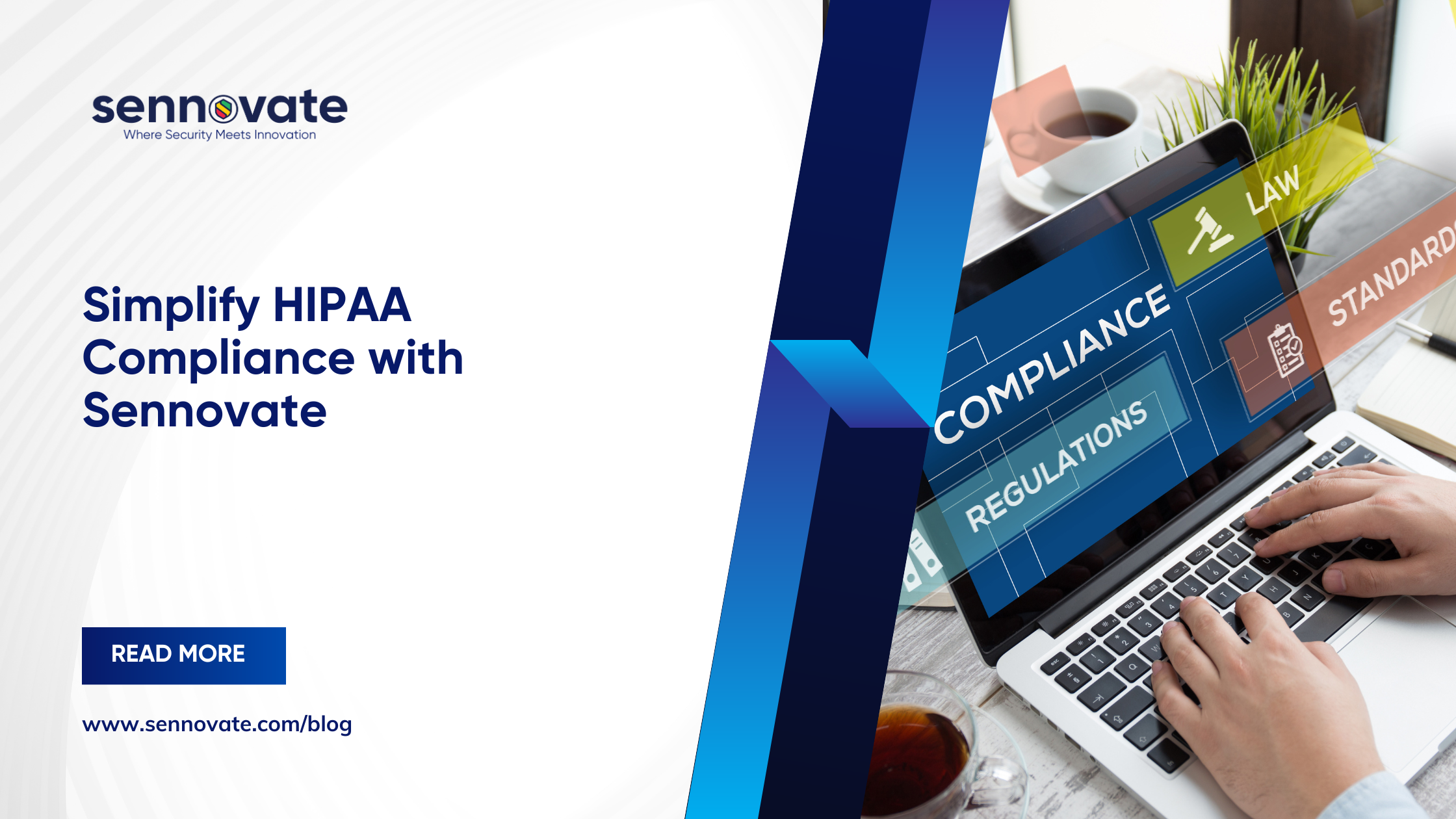
Simplify HIPAA Compliance with Sennovate
The Health Insurance Portability and Accountability Act (HIPAA) is a critical regulation in the healthcare industry, established to protect sensitive patient information. Its importance can be understood through several key points:
- Protection of Patient Privacy: HIPAA ensures that personal health information (PHI) is protected, maintaining patient confidentiality and trust.
- Security of Health Data: By setting standards for data protection, HIPAA helps prevent data breaches and unauthorized access to sensitive health information.
- Compliance and Legal Requirements: Adherence to HIPAA is a legal obligation for healthcare providers, insurance companies, and other entities handling PHI. Non-compliance can result in substantial fines and legal consequences.
- Enhancement of Healthcare Delivery: By securing patient data, HIPAA promotes better data sharing practices, improving the overall quality and efficiency of healthcare services.
- Patient Empowerment: HIPAA provides patients with rights over their health information, including access and control over how their data is used and shared.
Different Security Controls to Comply with HIPAA
To achieve HIPAA compliance, healthcare organizations must implement a range of security controls. These controls can be categorized into administrative, physical, and technical safeguards:
Administrative Safeguards
Effective HIPAA compliance begins with robust administrative safeguards. One of the foundational steps is Risk Analysis and Management, which involves conducting regular assessments to identify potential risks to Protected Health Information (PHI) and implementing strategies to mitigate those risks. This proactive approach helps in recognizing vulnerabilities and addressing them before they can be exploited.
Another critical component is Employee Training and Awareness. This involves ongoing training programs designed to ensure that all staff members understand HIPAA requirements and the best practices for data protection. By keeping employees informed and vigilant, organizations can significantly reduce the risk of accidental data breaches and other compliance issues.
Security Policies and Procedures play a vital role. These are comprehensive guidelines that govern the handling of PHI, ensuring that all administrative actions are aligned with HIPAA standards. Organizations must develop and enforce these policies to maintain consistency and security in their operations.
Lastly, having a robust Incident Response Plan is essential. This plan outlines the procedures for responding to data breaches or security incidents, enabling organizations to react swiftly and effectively to minimize damage and ensure compliance with HIPAA’s breach notification requirements.
Physical Safeguards
Physical safeguards are equally crucial in protecting PHI. Facility Access Controls are measures that restrict physical access to sensitive information, such as locked doors, security systems, and access badges. These controls help prevent unauthorized individuals from physically accessing areas where PHI is stored or processed.
Workstation Use and Security policies ensure that workstations and devices accessing PHI are used securely. This includes guidelines on workstation positioning, screen locks, and secure disposal of sensitive information displayed on screens.
Furthermore, Device and Media Controls are procedures for the secure disposal and reuse of hardware and electronic media containing PHI. This ensures that old devices and storage media do not become a source of data breaches, as all data is securely erased before disposal or reuse.
Technical Safeguards
Technical safeguards are the backbone of HIPAA compliance in the digital age. Access Controls are implemented to secure PHI by using unique user IDs, emergency access procedures, and automatic logoff mechanisms. These controls ensure that only authorized personnel can access sensitive information.
Audit Controls are systems that record and examine activity in information systems containing PHI. These controls provide a trail of actions taken on sensitive data, which is crucial for identifying and investigating any suspicious activity or potential breaches.
To maintain data integrity, Integrity Controls are put in place. These measures protect PHI from being altered or destroyed in an unauthorized manner, ensuring that the information remains accurate and reliable.
Finally, Transmission Security involves using encryption and other security measures to protect PHI during electronic transmission. This ensures that data remains secure as it travels across networks, preventing interception and unauthorized access.
How Sennovate Can Make HIPAA Compliance Easier for Organizations
Sennovate offers a suite of services designed to simplify HIPAA compliance for healthcare organizations:
- Sennovate GRC-as-a-Service: Sennovate’s GRC as a Service streamlines the management of governance, risk, and compliance activities. This service integrates risk management and compliance processes, providing a unified framework to address HIPAA requirements.
- Sennovate SOC-as-a-Service: With 24/7 monitoring, Sennovate’s SOC detects and responds to security incidents in real time, minimizing the risk of data breaches and ensuring swift action in case of any compliance issues.
- Sennovate Identity-as-a-Service: Sennovate’s Identity-as-a-Service encompasses the entire identity ecosystem, from IAM, PAM and IGA, to help manage user identities and access to sensitive information. This ensures that only authorized personnel can access PHI and includes implementing strong authentication methods and access controls.
- Sennovate SAT-as-a-Service: Sennovate provides customized training programs to educate healthcare staff about HIPAA requirements and best practices for data protection, helping organizations maintain a culture of compliance.
- Sennovate Advanced Defense and Strategy: Sennovate’s Advanced Defense and Strategy services offer a proactive approach to security and compliance. This includes advanced threat detection and response, strategic security planning, and the implementation of cutting-edge defense mechanisms.
By leveraging Sennovate’s expertise and advanced security solutions, healthcare organizations can effectively navigate the complexities of HIPAA compliance, ensuring the protection of patient data and the avoidance of costly penalties.
